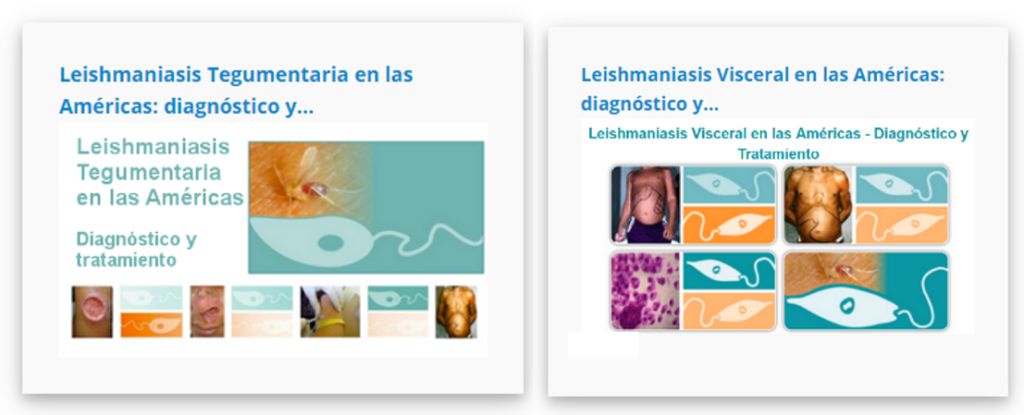The Pan American Health Organization/World Health Organization (PAHO/WHO, at its 57th Directing Council meeting, held in 2019, approved the Disease Elimination Initiative: A Policy for an Integrated and Sustainable Approach to Communicable Diseases in the Americas (CD57/7). This initiative establishes goals and targets for 2030, in line with the Roadmap for neglected tropical diseases (NTD), and, in the specific case of leishmaniasis with the WHO group of neglected skin diseases and the Action Plan to strengthen surveillance actions and control of leishmaniasis in the Americas 2017-2022. In view of this, BIREME and the PAHO Department of Communicable Diseases and Environmental Determinants of Health (CDE/PAHO/WHO) continue to develop educational projects for the development of distance education courses with a focus on the prevention, surveillance, and control of neglected diseases.
Making the diagnosis of leishmaniasis correctly implies the ability of health professionals to clinically suspect cases early and perform specific techniques for laboratory diagnosis for confirmation, as well as for differential diagnosis of other diseases. In this context, the training of professionals working in primary and secondary care becomes essential. However, professionals from other services, as well as students need to be constantly updated. The modality of self-instructional courses that are open access and available on the Moodle platform of the Virtual Campus of Public Health (CVSP) has provided an effective response in this process and, consequently, generated a considerable collection of Open Educational Resources (OER) such as: video classes , audios, animations, and a selection of document references from the Virtual Health Library (VHL) specific to each course.
 In this scenario, the role of BIREME has been to contribute to the pedagogical orientation of the content team’s instructional design, selecting the scientific reference documents from the VHL, creating the thematic library aligned with the course, until completing its implementation phase.
In this scenario, the role of BIREME has been to contribute to the pedagogical orientation of the content team’s instructional design, selecting the scientific reference documents from the VHL, creating the thematic library aligned with the course, until completing its implementation phase.
On the part of the CDE/PAHO/WHO unit, specialists such as Ana Nilce S. Maia Elkhoury, Regional Advisor for Leishmaniasis and Dr. Samantha Y. O. B. Valadas, Specialist in project support, together with experts in leishmaniasis, renew the project to update the didactic and technological content in Leishmaniasis en las Americas, in light of the recommended new evidence and the standardization of techniques for the Americas, in addition to technological advances that require a detailed review of the Leishmaniasis Courses currently available on the PAHO/WHO Virtual Public Health Campus.
The proposal to restructure the Leishmaniasis en las Américas course (Module I and Module II), involves updating the content and technological adequacy, in addition to meeting the principles of economy and practicality, due to the exponential reach of participants at a much lower operating cost when compared to the preparation and scope of the face-to-face course; added to this, the speed of information, the interaction between student and content, the interaction between student and interactive resources, and the freedom and autonomy so valued in the present world context. It is intended, in this technological restructuring by means of responsive tools and current versions converted to HTML5, to make the content responsive, easy to use on any mobile device and in addition, to insert images and the most current layout, following the Organization’s visual standard.